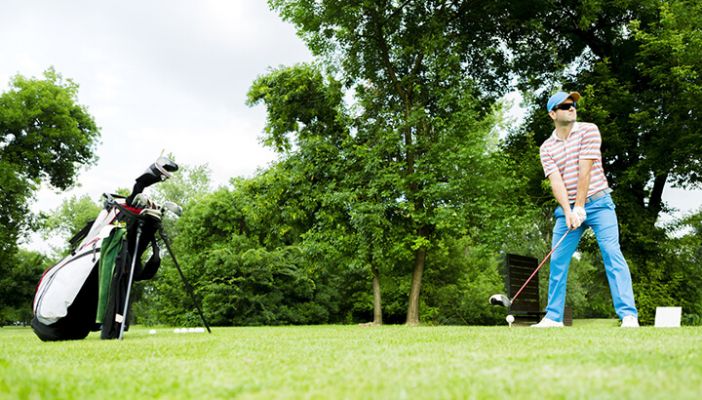There are one or two technical matters that consume a lot of copy in golf manuals, advice columns and online forums. Moving the head is one of these. It doesn’t take long to note that there are a myriad of fixes for this root cause of many bad shots.
The vast array of idiosyncratic swings don’t take away from being competitive and fuelling a passion for the game. Remember, we are not all going to be blessed with Couples’ effortless swing or Mickelson’s impressive short game. We make do with what we have and try to tweak it.
However, one of the most commonly repeated technical errors is moving the head during parts of the backswing or swing through impact. If we want to get highly pernickety here, the head should marginally move and rotate with the body. This aids the pivoting and body motion to make solid contact with the ball.
Different types of head movement
The most common movement is lifting the head and torso backward prior to the shot being completed. It’s a wonder that whiplash is not a more common ailment on golf courses, since flicking the head back in the millisecond before contact with the ball is a common event. Players forget to execute the most critical component — staying down on the ball and keeping the head (and upper torso) still and focused on that white ball at impact!
Perhaps even more damaging is moving the head in the direction of the intended flight prior to the shot being executed. Players are understandably keen to see the result of their well-conceived shot. But “having a look” can have dire consequences. Topping, hitting it fat or hitting it thin are common results. Even worse, it might result in a shank or an air-shot! These can seriously mess with confidence and enjoyment of the game, as well as adding shots to the round.
How to fix your swing
The common advice by well-meaning playing partners is to “keep your head down and eyes on the ball.” This advice is all well and good. However, the statement comes with very little other insight or instruction. Whilst a constant reminder of this core technical “must-do” is helpful, it is rarely backed-up with a practical guide that might ensure the head stays down and eyes remain focused on the ball! Apart from replaying that mantra before each shot, here are some practical pointers that might help:
What’s the target?
We know the longer-term target is the hole. But, the immediate focus must be a spot on the ground millimeters behind the ball. Find that spot, lock it into your radar and don’t take your eyes off it. Keeping a close eye on the back of the ball or a point not far from it is a commonly applied remedy. The practical way to do this is to replicate the focus in your practice swing. This way, the memory recall is strongest immediately prior to your shot.
It might help to mark your ball in a way that not only aids identification but also creates a focus point for your eyes when planning your shot. Try an overall dot pattern, two intersecting circles or a series of random crosses. Go for any sort of repeat pattern that is likely to be visible from any lie. This is useful in creating a specific focal point on the ball.
Count to three
A visiting pro giving a free clinic was overheard telling the young and enthusiastic charges to pick the spot on the ground, execute the swing and remain focused on that spot for another three seconds before looking up. This approach was applied to putting, chipping and indeed all other shots. While this might feel a little exaggerated, the sentiment is simple. Stay down on the ball and remain still on that ground spot. There will still be plenty of time to look up and see your ball later.
Try a range drill
There are a myriad of range drills that train the eyes and head to remain hard-focused on the target spot. You can’t lose a ball at the range, right? So use the extra seconds to remain focused on the spot you hit before turning your head to follow the ball. Better still, see if you can hit the first five balls of each club used without looking up at all. The ball won’t do any damage and the eyes and brain are trained to remain on the contact spot.
The right sort of head turn
Rather than lifting your entire upper torso to check the flight trajectory and shot success, why not pretend that there is a rod running from the top of your head to between your shoulder blades? Pretend that the only way you are going to get to check on the shot is by allowing your head to slowly follow behind your arm thrust. Keep your ear close to your shoulder and facing the ground. Bring your head around as though joined to your shoulder. Even keeping the chin down in a more pronounced way will help to correct any tendency to lift the head too soon.
Like all technical irritations, it never hurts to check in with the local teaching pro, witness the issue on video and go from there. Meanwhile, look at slow-motion swing analyses of the pros. Watch their head and upper torso movement, stand up and create some muscle memory by re-enacting what was just seen on screen. Good set-up routines and regular swing interrogation will wipe this damaging habit from your game.
— N. Incoll
